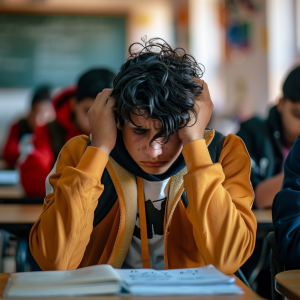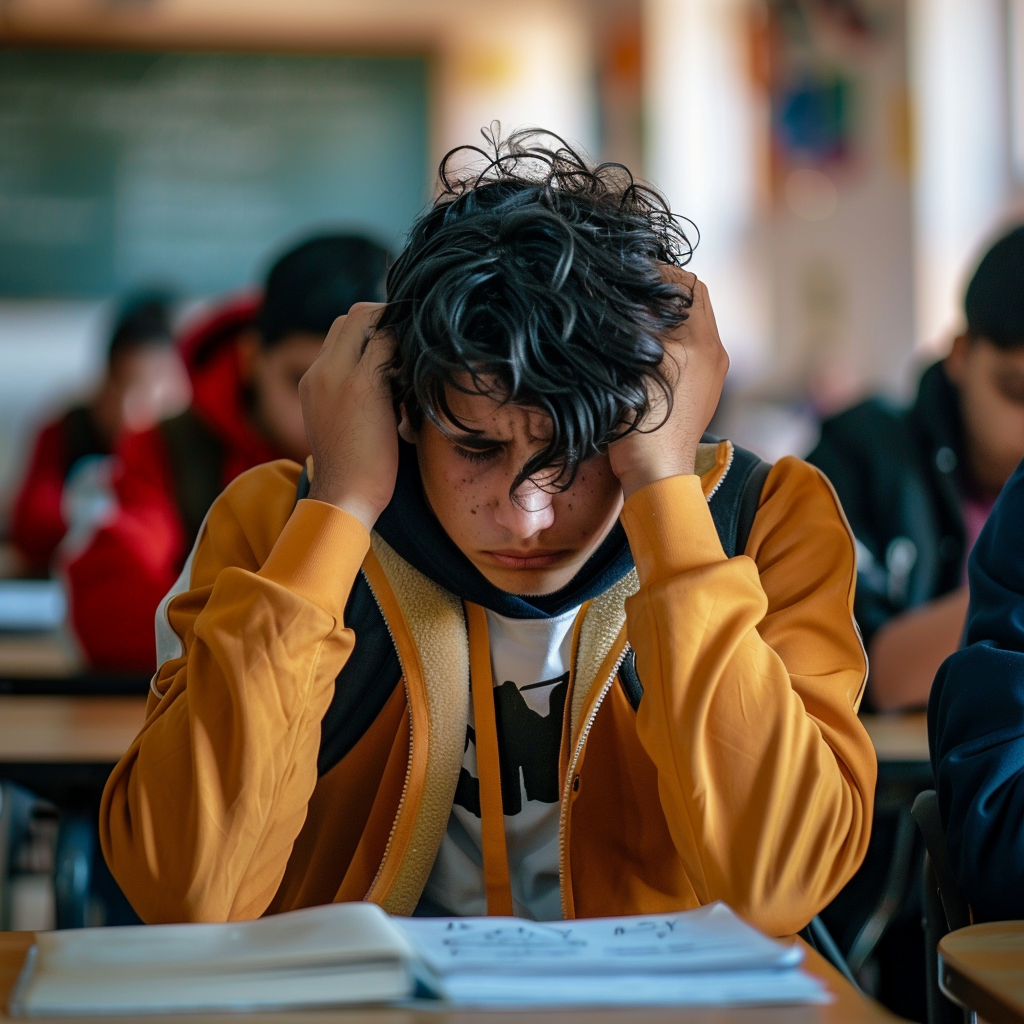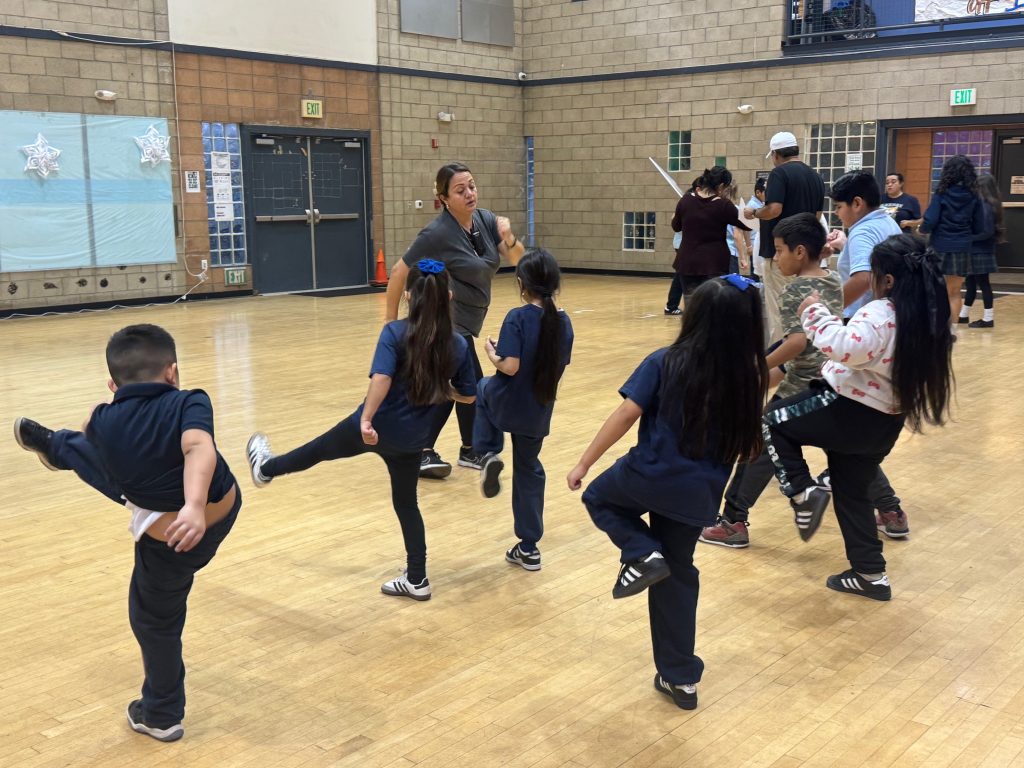 Depression is a pervasive issue among teenagers, but its impact is especially hard hitting among those from underprivileged backgrounds.
Depression is a pervasive issue among teenagers, but its impact is especially hard hitting among those from underprivileged backgrounds.
According to the American Psychological Association (2018), one of the most significant factors that can contribute to mental health challenges including depression is financial instability. Nearly two in three teens ages 15 to 17 (63 percent) report their families’ financial insecurity is a significant source of stress (APA, 2018).
From financial strain to not knowing when the next meal will come and everything in between, many teens also find themselves in unconventional roles. While it may be a “traditional” viewpoint that a typical teen would not have to bear the burden of running a household, many within struggling families also find themselves in the role of provider.
In addition, those from communities that are economically challenged tend to be exposed more frequently to violence both inside and outside the home. The U.S. Department of Justice (2014) states that those living in households at or below the Federal Poverty Level (39.8 per 1,000) had more than double the rate of violent victimization as those in high-income households (16.9 per 1,000).
Finally, teens that are struggling with depression in socioeconomically struggling areas often must contend with a lack of resources. From seeking mental health help to dealing with educational disparities, research has shown that underprivileged children and teens do not have the same access to assistance as other higher income families (Ballard Brief, 2022).
As we go into this deeper, it is obvious that socioeconomic status plays a significant role in exacerbating mental health challenges, especially in the context of children/teens and their struggles of depression.
The Negative Affects
The cumulative effect of these factors can create a heavy emotional burden for many underprivileged teens – a burden that often reveals itself in multiple ways. Depression in these young people often manifests through both silent and devastating results:
– Academic Struggles: Depression can lead to difficulty concentrating/focus, poor academic performance, and separation from school activities. The National Institute of Mental Health (n.d.) states that depression is a leading cause of poor academic performance among teens: this often results in higher dropout rates and a higher likelihood of withdrawing from any college/extracurricular opportunities (Ballard Brief, 2022).
– Social Isolation: Teens with depression may withdraw from friends and family, exacerbating feelings of loneliness and hopelessness. The National Institute of Mental Health (n.d.) reports that social isolation is a common symptom of depression in teens.
– Risky Behaviors: To cope with their emotions and environmental challenges, some teens may turn to substance abuse or other risky behaviors, further endangering their well-being. According to the Substance Abuse and Mental Health Services Administration (2018), teens with depression are more likely to engage in substance use. In addition, the CDC states that “youth with substance use disorders also experience higher rates of physical and mental illnesses, diminished overall health and well-being, and potential progression to addiction” (CDC, 2022).
Because teens are often in a position of dependence upon their families and communities, when resources are lacking, and they are unable to dig themselves out of this strenuous cycle, hopelessness and depression are inevitable.
“Ultimately, the lack of community funding and fewer resources limits the likelihood of success among low socioeconomic status (SES) students” (Ballard Brief, 2022).
 While schools should provide respite at some level for those surrounded by economic disparity, it is often just another addition to their struggles.
While schools should provide respite at some level for those surrounded by economic disparity, it is often just another addition to their struggles.
High teacher turnover rates in impoverished school districts as well as fewer library resources/lack of available college materials and overall lesser funding, teens that reside within socioeconomically challenged areas are often educationally behind their wealthier counterparts (Ballard Brief, 2022).
For many, the outlook is bleak:
“Research has confirmed that lower-income students perform worse in school as measured by academic tests—roughly 1 standard deviation lower, or about 3 academic years behind. (Low income) students enter high school with average literacy skills 5 years behind their (higher income) counterparts. (Low income) students are behind in reading and math proficiency by 20–26 percentage points compared to (high income) students. (Low income) students are also disciplined and suspended more frequently and attend class less” (Ballard Brief, 2022).
With so many challenges that may seem insurmountable, it is imperative that we find and immediately implement solutions for these teens and their families.
Breaking the Cycle: How We Can Help
Addressing teen depression, particularly in underprivileged communities, requires a multidimensional approach. We must:
– Increase Access to Mental Health Services: Ensuring that mental health resources are accessible and affordable for all families is crucial. Community programs, school counselors, and online resources can all play a significant role.
– Create Safe Spaces: Provide safe and supportive environments, both at home and in the community, where teens can express their feelings and receive support.
– Provide Educational Support: Enhance educational resources and support systems in underprivileged areas to help teens succeed academically and build self-esteem.
– Promote Awareness: Raising awareness about the signs of depression and the importance of mental health can help reduce stigma and encourage teens to seek help.
Aside from increasing resources and supporting/promoting awareness, it’s vital to focus on what we can do at each individual level.
School counselors and administration can draw more attention to the importance of mental health and participate in campaigns by organizations like Mental Health America (MHA), who aim to increase awareness and reduce stigma around mental health issues. MHA offers several different ways to advocate for stronger mental health on their advocacy page. This can be something as simple as downloading their mental health toolkit to writing your local congressperson, advocating for change at the federal level.
Also, parents and other community members can volunteer their time to both schools and other community centers in the area. Research has shown that adults and teens who engage in volunteer activities tend to experience increased happiness and emotional well-being (Center for Children and Youth, 2024). The opportunity to help someone else can be the catalyst for change for many individuals, and a consistent base of volunteers would resolve the ongoing battle for resources that these organizations experience.
Finally, while it may sound simple, exercise holds an enormous role in combatting depression at all ages.
 From stress relief to promoting a healthier cardiovascular system, exercise of all forms is beneficial. Dr. Michael Craig Miller, Assistant Professor of Psychiatry at Harvard Medical School, stated “…in people who are depressed, neuroscientists have noticed that the hippocampus in the brain—the region that helps regulate mood—is smaller. Exercise supports nerve cell growth in the hippocampus, improving nerve cell connections, which helps relieve depression” (Harvard Health Publishing, 2021).
From stress relief to promoting a healthier cardiovascular system, exercise of all forms is beneficial. Dr. Michael Craig Miller, Assistant Professor of Psychiatry at Harvard Medical School, stated “…in people who are depressed, neuroscientists have noticed that the hippocampus in the brain—the region that helps regulate mood—is smaller. Exercise supports nerve cell growth in the hippocampus, improving nerve cell connections, which helps relieve depression” (Harvard Health Publishing, 2021).
If a local community/recreation center does not have the resources to hold regular free classes, start your own! Expertise is not required for many activities, and the benefits are innumerable. Assemble a few friends and form a running group a few times a week or reach out to local parents and discuss favorite sports. It doesn’t have to be in a formalized gym or location; sometimes just getting together to play a game of football or basketball can be enough.
We all play a role in not only supporting but providing solutions for the most socioeconomically challenged families in our neighborhoods. Healthier children and teens, both physically and mentally, empower their communities and build a more positive future for all.
Depression among underprivileged teens is a complex issue that requires our collective attention and action. From financial instability to exposure to violence and a lack of resources to combat these issues, teens that are surrounded by an economically challenged environment have much stacked against them.
Furthermore, the isolation and limited access to supportive networks can worsen feelings of hopelessness and despair among these teens. Without adequate mental health services, support/awareness, and positive outlets for expression and connection, they may find themselves trapped in a cycle of negative emotions. It’s essential to recognize that mental health challenges in underprivileged communities often go unnoticed or untreated, further deepening the divide in well-being and opportunities for these young individuals.
By understanding the profound impact of socioeconomic status on mental health, we can better address the silent burdens these teens carry and work towards creating a more equitable and supportive environment for all. We all play a role in empowering these teens and building a stronger future for everyone.
References
American Psychological Association. (2018). Stress in America: Stress and Generation Z. Retrieved from (https://www.apa.org/news/press/releases/stress/2018/stress-gen-z.pdf)
Ballard Brief. (2022). The Socioeconomic Achievement Gap in US Public Schools. Retrieved from https://ballardbrief.byu.edu/issue-briefs/the-socioeconomic-achievement-gap-in-the-us-public-schools#:~:text=2-
CDC. (2022). High-Risk Substance Abuse Amongst Youth. Retrieved from https://www.cdc.gov/healthyyouth/substance-use/index.htm
Center for Children and Youth. (2024). 7 Reasons Why Volunteering is Good for Teens Mental Health. Retrieved from https://ccy.jfcs.org/7-reasons-why-volunteering-is-good-for-teen-mental-health/
Harvard Health Publishing. (2021). Exercise is an All-Natural Treatment to Fight Depression. Retrieved from https://www.health.harvard.edu/mind-and-mood/exercise-is-an-all-natural-treatment-to-fight-depression
National Institute of Mental Health. (n.d.). Teen Depression. Retrieved from https://www.nimh.nih.gov/health/publications/teen-depression/index.shtml
Substance Abuse and Mental Health Services Administration. (2018). Key Substance Use and Mental Health Indicators in the United States: Results from the 2018 National Survey on Drug Use and Health. Retrieved from https://www.samhsa.gov/data/report/2018-nsduh-annual-national-report
US Dept of Justice. (2014). Household Poverty and Nonfatal Violent Victimization. Bureau of Justic Statistics. Retrieved from https://bjs.ojp.gov/content/pub/pdf/hpnvv0812.pdf






